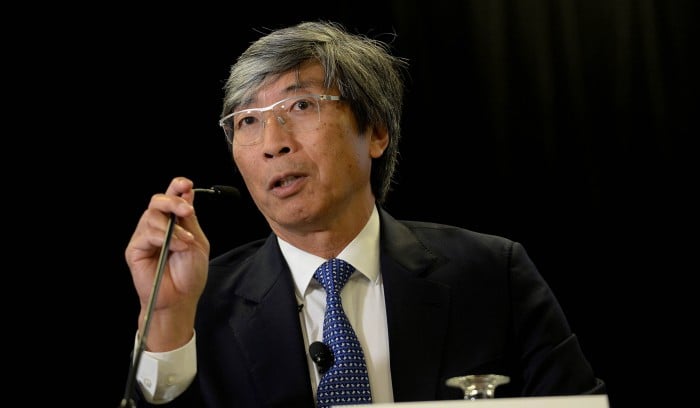Doctor Behind Knock-Off “Cancer Moonshot” Meets with Trump

The man who’s been called the richest doctor in the world can now count himself among President-elect Donald Trump’s rapidly expanding circle of friends.
On Saturday, Patrick Soon-Shiong, a billionaire medical entrepreneur, had dinner with Trump. Soon-Shiong is known for his innovative streak and his business acumen: he founded Abraxis Pharmaceuticals, demonstrated the efficacy of its drug Abraxane in fighting cancer, and sold his company to Celgene in 2010 for a cool $2.9 billion.
He is also known for being a hype man, a relentless self-promoter, and very good at enriching himself.
Soon-Shiong has a penchant for spinning out companies from the umbrella firm NantWorks, which he controls; it is valued at several billion dollars. One of those, NantHealth, went public earlier this year for around $1.5 billion. NantHealth purports to provide technology that allows hospitals to link up medical devices to provide a constant stream of patient data that will, it claims, improve treatments. But even people who have been given personal tours of the setup have a hard time understanding what Soon-Shiong is really selling. In 2015, two high-level employees filed a lawsuit against the company, alleging that it was defrauding the U.S. government. Nevertheless, as CEO Soon-Shiong was compensated to the tune of $148 million in 2015.
Earlier this year, just before President Obama used his final State of the Union address to name Joe Biden the head of the Cancer Moonshot initiative, Soon-Shiong launched Cancer Moonshot 2020.
In soaring terms worthy of the presidential speech that Soon-Shiong preempted, the project’s website declares its aim is to “win the war on cancer—to get to a point in the very near future when we are managing cancer the same way we might manage any chronic disease, such as diabetes or asthma." Much is made of harnessing genomic data, realizing the full potential of the immune system to fight cancer, and so on.
But what it amounts to is paying lip service to several emerging fields of cancer research, packing in all the appropriate buzzwords, and pronouncing his moonshot best.
As others have pointed out, Soon-Shiong isn’t a even cancer immunology researcher. His most successful drug, Abraxane, is an improved delivery mechanism for a cell-killing compound that’s been available since the 1990s. Some of the most exciting cancer treatments around do indeed involve harnessing the immune system to defeat cancer—but at best, Soon-Shiong is very late to the party. His “me first!” attempt to stake out the “Moonshot” moniker for his project may not work, either: MD Anderson Cancer Center, which claims it has used the name since 2012, is suing him for trademark infringement.
Still, Soon-Shiong may yet have the last laugh. When Cancer Moonshot 2020 was announced, he claimed that the White House, the FDA, and the National Institutes of Health were all backing it—that is, until the feds launched the Biden-led initiative. If Soon-Shiong truly does have the ear of president-to-be Trump, he may soon become one of the country’s most powerful figures in the world of cancer funding and research.
If that happens, we can expect lots of showmanship—but perhaps less real progress.
(Read more: Endpoints, Forbes, Fortune, “Biotech’s Coming Cancer Cure”)
Keep Reading
Most Popular
Large language models can do jaw-dropping things. But nobody knows exactly why.
And that's a problem. Figuring it out is one of the biggest scientific puzzles of our time and a crucial step towards controlling more powerful future models.
The problem with plug-in hybrids? Their drivers.
Plug-in hybrids are often sold as a transition to EVs, but new data from Europe shows we’re still underestimating the emissions they produce.
Google DeepMind’s new generative model makes Super Mario–like games from scratch
Genie learns how to control games by watching hours and hours of video. It could help train next-gen robots too.
How scientists traced a mysterious covid case back to six toilets
When wastewater surveillance turns into a hunt for a single infected individual, the ethics get tricky.
Stay connected
Get the latest updates from
MIT Technology Review
Discover special offers, top stories, upcoming events, and more.